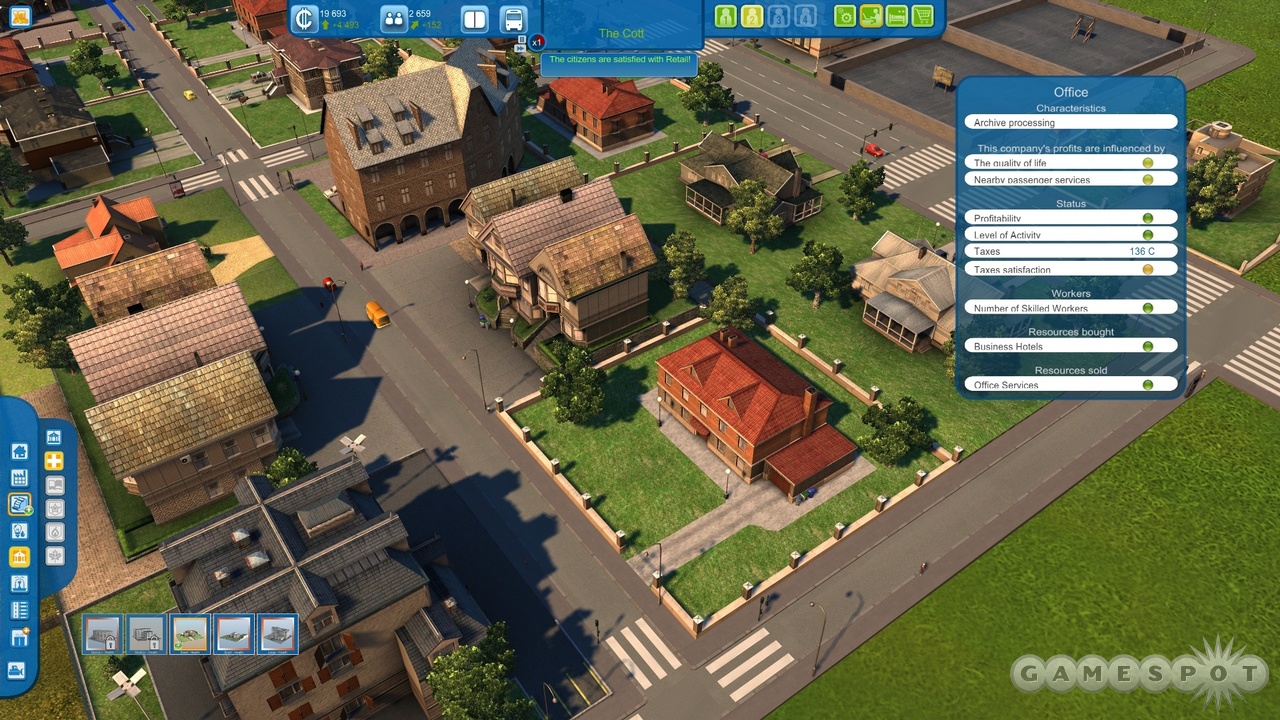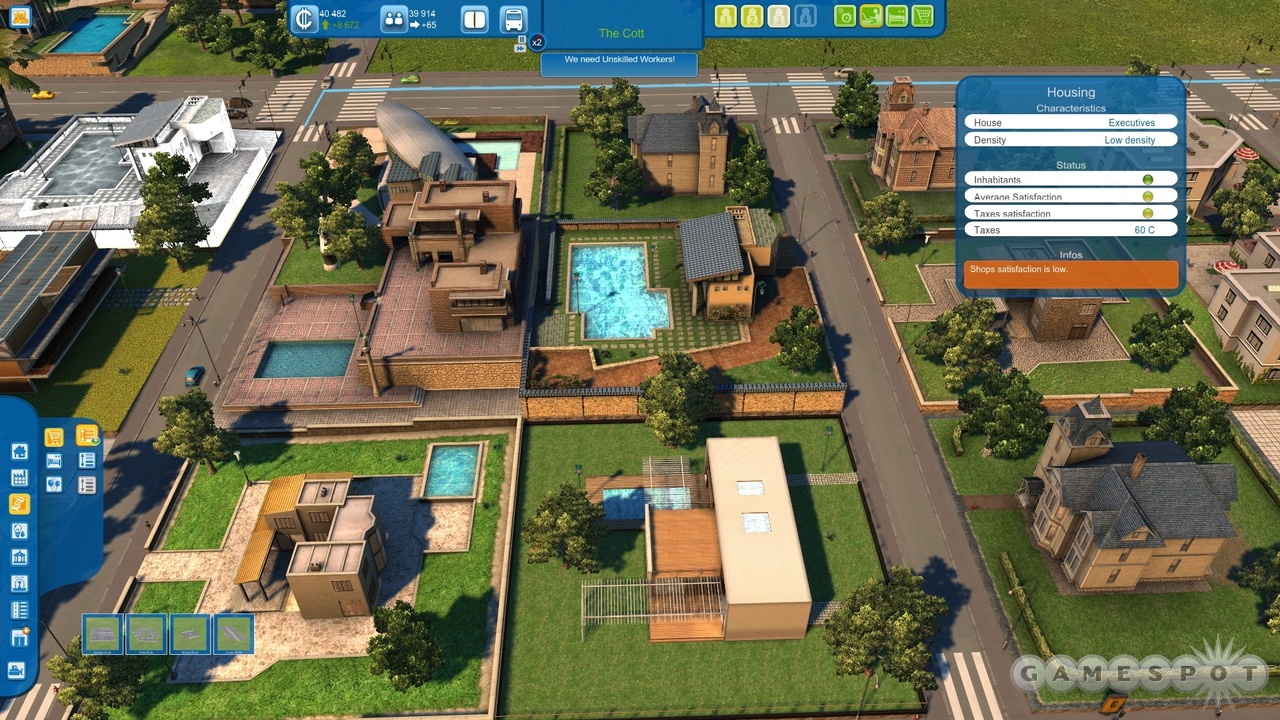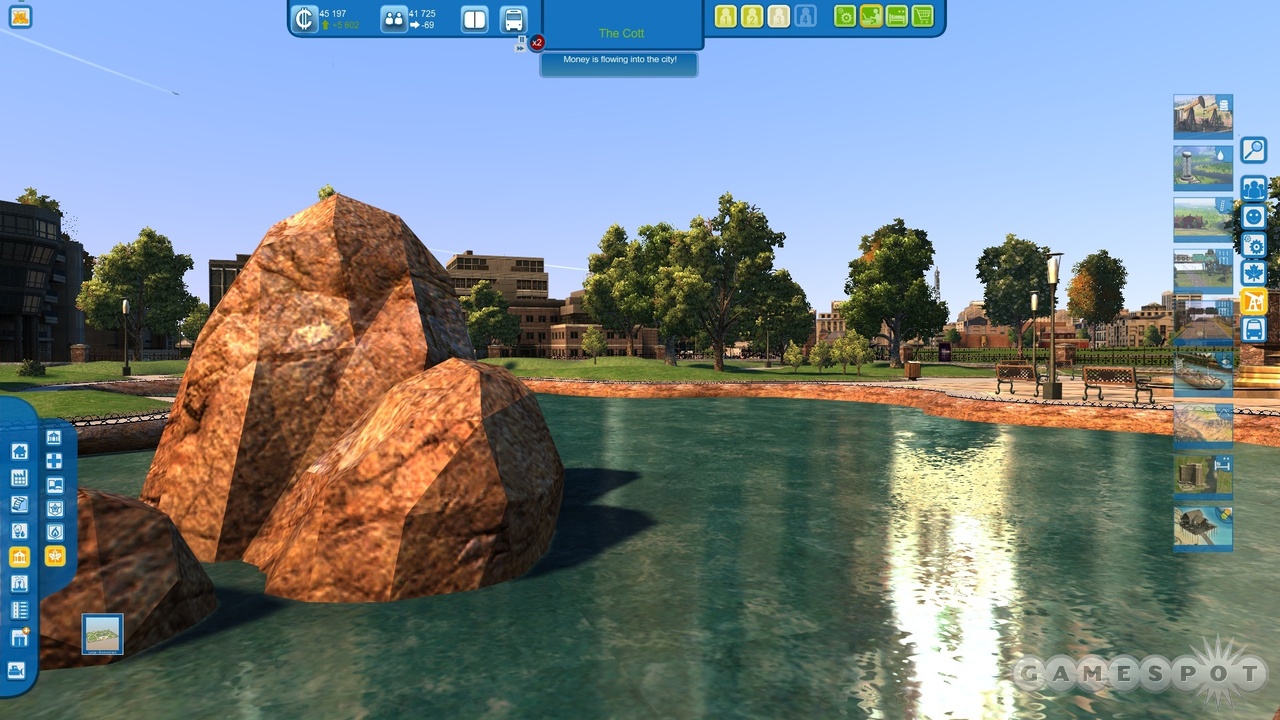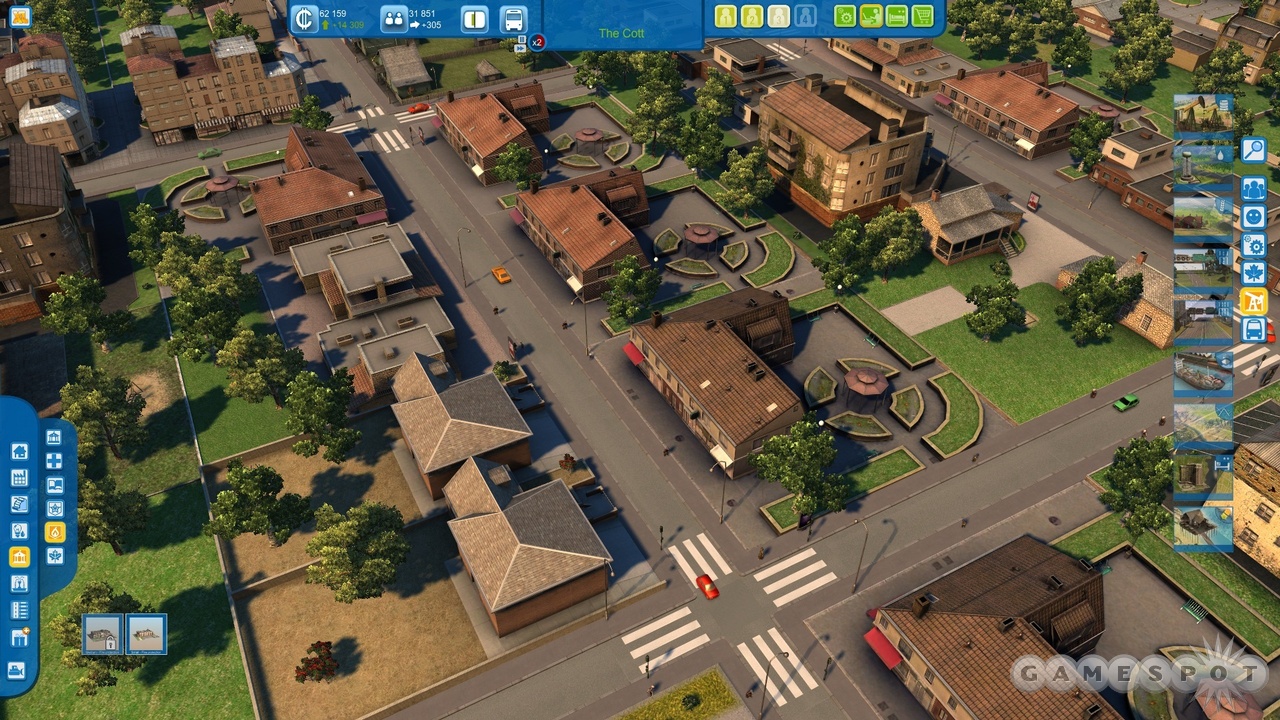Playing a virtual mayor may be a lot more enjoyable than doing it in the real world. Cities XL 2012 simplifies the messy rigmarole that comes with running a municipality; you eliminate things like labor problems, uptight councillors, and calls from angry residents about raccoons getting into garbage cans in favor of focusing on urban planning. Developer Focus Home Interactive does an impressive job on this big picture, too, thanks to a wide variety of map terrain and a straightforward interface that make it easy to build the metropolis of your dreams. But there is one big problem: You've seen it all before. This game is a complete rehash of Cities XL 2011, with only some new buildings and maps added to the feature set. While the publisher is making no secret that this is more of an expansion than a full-blown sequel and is offering an upgrade to owners of last year's game for $15, there still isn't enough fresh content to warrant a purchase.

If you're familiar with Cities XL 2011, then surprise, you're already familiar with Cities XL 2012. This is pretty much the same game, albeit with around 300 new buildings (a mostly cosmetic change that gives neighborhoods a revamped look with things like deluxe waterfront homes) and 15 new maps on which to ply your city-building talents. The heart of the game still beats exactly as it did last year. You play virtual mayor of a budding burg on maps that represent terrain of all types found in every corner of the globe. Just about everything you could imagine is represented here, from fertile valleys and deserts to rocky wastelands and island paradises. Each comes with fairly distinct challenges that mostly involve how to best manipulate the terrain and how to deal with resource shortages in crucial areas like water and oil. As with the earlier games in the series, there is no campaign here. Instead, you freely go from one map to the next and develop cities that coexist as part of a shared global economy. So even though you're not following any sort of storyline, you are building cities that can work together.
Mechanics follow the modern city-building template laid out in SimCity 4 back in 2003. You have godlike control over every aspect of urban planning, which allows you the freedom to lay down residential, commercial, and industrial zones where homes, offices, factories, stores, and the like automatically pop up as soon as the dust clears. While you do construct some specific buildings, like schools, police stations, and high-rise hotels, most of the time, you're drawing huge runs of city blocks that soon become home to apartment buildings and Dunder Mifflin-styled office complexes. So, build it and they will come. There are some complications that mainly have to do with the need to build different housing for unskilled, skilled, executive, and elite working classes, as well as balance standard residential houses with denser developments, such as townhouses, apartments, and condos, as your city grows. Regardless, you couldn't ask for more of a no-nonsense economic system.
Cartoonish graphics with laid-back sound effects and music add to the easygoing atmosphere. Neighborhoods are attractive, but they're so neat and clean that they come off as unrealistic. Lawns are all perfectly manicured, and there isn't a scrap of litter to be found anywhere, let alone something truly scarring to the urban landscape, like graffiti. If you zoom down to street level, you can spot your bulbous citizens doing things like dancing on park benches and even possibly playing hacky sack. Audio effects include a basic range of urban noises along with building-specific sounds like what has to be the world's oldest dot-matrix printer churning away whenever you click on an office building. Soundtrack tunes are an impressively diverse series of cool jazz tracks that give the game a lot of personality. This isn't quite elevator music, although some of the songs make Steely Dan sound like The Sex Pistols.

As simple as the economic system here is, you still face some challenges when managing your city. Your citizens want good return on their tax dollars and have the audacity to demand amenities. These include jobs, reasonable health care, and safe neighborhoods covered by police stations and fire departments, as well as recreational opportunities like bowling alleys and swimming pools. You have to keep the people pleased or they will move away, leaving businesses without employees and you with dropping tax revenue. Everything is quite well balanced, though. Serious pitfalls are few and far between so that you are free to build some spectacular municipalities after a short time with the game. Unlike many other city-builder games, there are no big gotcha moments, where the game design breaks down over buildings that don't work, neighborhoods that residents can never seem to escape to find a job even though there are a dozen factories just a few blocks away, and so forth.
A smooth, intuitive interface keeps things humming. Although the icons are tiny and the text on some of them so small as to be unreadable when running at high resolutions, the overall presentation is straightforward enough for you to find your way around with ease. Construction options are never more than a couple of clicks away, and important city information regarding taxes, resources, and the like are also immediately accessible. The game comes with a lengthy series of tutorials, but you don't really need to bother with them. Little tips are constantly offered up to let you know when there are shortages of homes for specific classes of workers, when resources are so low that basics of life are being rationed, or when you need to set up some more factories to reduce unemployment. There isn't enough advice posted in these tips to walk you through the game, although this guidance holds your hand just enough so you soon figure out what to anticipate.

Still, Cities XL 2012 is not without its faults. Resource shortages are the biggest issue. It can be tough to just build a one-off city because the game pretty much forces you to connect multiple towns into trading networks. Many maps are bereft of vital resources, such as water and oil. These valuables become increasingly necessary once your population goes over 50,000 and you need to get high-skilled manufacturing and high-tech industries going. You may be cruising along with overjoyed citizens and zero unemployment but then run into shortages and have everything crash down around your head. So if you can't harvest this stuff locally, you need to bring it in either by trading with yourself courtesy of the other cities that you've created or by dealing with a gouge-happy AI corporation. And this is a real hassle. Most of the time, all you want to do is focus on one city, without having to worry about developing a half-dozen cities or more purely for the ability to schlep oil across the globe or messing with the patently fake AI trader. The concept doesn't even make sense because it treats cities like little independent nations that aren't tied to state/provincial and federal governments. The trading mechanism seems to have been unwisely held over from the days when Cities XL had a massively multiplayer component that forced human players to wheel and deal. Now that this aspect of the game has been jettisoned, it's time to ditch this unwieldy trading feature.
Another smaller problem has to do with the basic structure of the map scenarios. Every map sees you starting off from scratch with little more than basic road layouts and then working your way into the future as your population grows. This is a tried-and-true way to structure a city-building game, but it can also be boring. Even though the terrain varies considerably from map to map, you still find yourself repeatedly building the same town and dealing with the exact same issues. You can only build so many fire stations and so many shopping districts before you start wishing that Godzilla or a natural disaster would take care of your whiny citizens. Progression is totally linear as well. You plug forward until you hit population milestones, whereupon new buildings and options become available. So if you've got 49, 999 people in town, forget about putting up that middle school. If you clock 50,000, though, you can start hiring teachers. Even though this system works well, it is also incredibly arbitrary and really reinforces the notion that you're going through the same motions with your cities, whether you're building them in barren scrub or along a gorgeous tropical shoreline.

Even though Cities XL 2012 is nothing more than a fixer-upper with some fairly serious limitations, it remains a reasonable bet for virtual urban planners who have yet to experience this franchise in all of its glory. It doesn't break any new ground, but it covers a lot of the city-building bases, is more modern than its most recent SimCity competitor, and, as such, comes with a fair number of strong points to offset the weak. If you have last year's model, however, this upgrade is a questionable buy given the limited number of extras tossed into the mix.